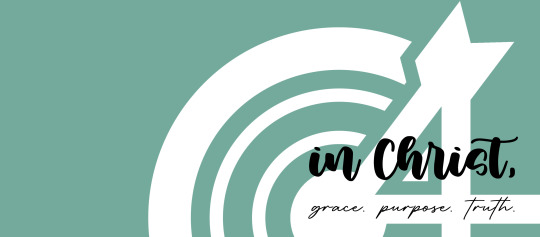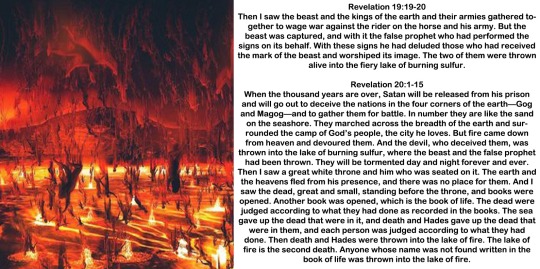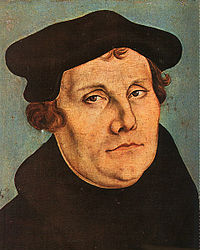#Bible technology
Link
https://ift.tt/yoAsqS4
2 notes
·
View notes
Text
The Bible on floppy disk, as seen on “The Computer Chronicles,” 1989.
70 notes
·
View notes
Text
The quality drop murdering my favorite videos 💀
Anyway, color-correcting tips are very much welcome, I will love anyone who comes and fixes this travesty 😭
This is my favorite ending vid for the following reasons:
Dorky dancing from Bible & Apo, and Apo & Jeff (also Mile & Jeff but my camera skills... went poof)
MILE AND APO (another angle on Apo wanting to help Mile with his guitar)
Mile throwing his guitar pick to the crowd, we love a generous king
Apo lightly tapping Mile's hip
Hopefully you hear the sound, I left that in because Apo's "Put your hands up, put your hands up!" is something so personal to me ❣
#lq vids of hq men#we are struggling with technology in the year of our lord 2k22#as you can see I do not have good camera or video editing skills#mileapo making me feel insane as per usual#I have feelings for Apo hyping up the crowd#no I will not elaborate#I also have feelings about how Apo checks in with Mile#and how Mile just goes along with him#kinnporsche#kinnporsche cast#kinnporsche world tour 2022#kpwt manila#mile phakphum#apo nattawin#jeff satur#bible sumettikul
39 notes
·
View notes
Text

him: (sweetly) I'd like to talk to you privately, Jean.
her: (coyly) Oh, really, Bill?
[they walk ten feet over to the trees]
her: So... what's on your mind?
[puts his arm up on tree over her]
him: Do you know about our savior, Jesus Christ?
her: Do you know about ice-blue Secret deodorant, Bill?
Youth-oriented Bibles were a thing in the 1970s -- my great-aunt gifted me with The Way when I was 10 -- and here's an image from one of those at an antique store in Cashmere, WA.
#yes I am aware that Secret is for women#but let's not be gendering antiperspirants#maybe he wants to be dry and pretty too#vintage#bible#technology#1970s
7 notes
·
View notes
Text

Welcome to VerseGPT!
Your Christ-Centered Cyber-Companion harmonizing theology and technology for living in Grace, Purpose, and Truth
In this fast-paced tech era, diving into the study of God's Word can feel overwhelming. At VerseGPT, we serve as a guiding light through the challenges of independent study. Seeking Biblical insights alone can be demanding, and the rise of AI may tempt us to seek external assistance. This poses a profound dilemma: should we trust AI-generated Biblical information or follow charismatic leaders, recognizing that both options may not always align with Scripture?
We value technology, especially the capabilities of ChatGPT, as a tool for uncovering the timeless truths of the Bible. It utilizes analytical prowess and a vast knowledge base to explore deep theological concepts. However, as Christians, our ultimate reliance rests upon the power of the Holy Spirit. Discernment from a personal relationship with God is irreplaceable. While AI can complement our studies, it must never overshadow the importance of delving wholeheartedly into the Word of God itself.
In this delicate balance, remember that our faith isn't a product of algorithms; rather, it's a result of a living relationship with God through the Lord Jesus Christ. Therefore, let the Holy Spirit be our chief Guide, helping us discern truth, embrace wisdom, and navigate complexities with a firm foundation in the unchanging Word of God.
Join us at VerseGPT, where theology and technology harmonize!
Our mission is to glorify God by responsibly harnessing AI as a helpful supplementary tool for deepening our faith and overflowing in love; grounded in God's Word and guided by God's Spirit.
Main Core Values of VerseGPT:
Christ-Centered Approach:
VerseGPT prioritizes our Lord Jesus Christ at the center of its mission and activities, acknowledging the grace, purpose, and truth of the Gospel as foundational to all endeavors. This value reflects our commitment to centering everything we do around Jesus Christ and the transformative power of the Gospel.
Integration of Theology and Technology:
VerseGPT harmonizes theology and technology, recognizing the potential of AI as a valuable supplementary tool for studying the Bible with precision and depth. This value underscores our dedication to blending deep theological insights with cutting-edge AI technology to enhance understanding of God's Word.
Responsible AI Usage:
VerseGPT is committed to responsibly harnessing AI through ethical and biblical principles, ensuring that technology complements and supports spiritual growth without replacing personal faith and discernment. This value demonstrates our adherence to ethical guidelines and our belief in technology's role as a supportive tool in spiritual development.
Deepening Faith:
The primary goal of VerseGPT is to deepen faith through the exploration of God's Word and the guidance of the Holy Spirit, fostering a deeper relationship with God. This value highlights our mission to facilitate spiritual growth and strengthen individuals' connections with God through Biblical exploration and reliance on divine guidance.
Overflowing in Love:
VerseGPT seeks to cultivate love for God's Word and His Spirit, encouraging individuals to overflow in love for God and others, embodying the principles of Christian love and compassion. This value emphasizes our commitment to fostering love, compassion, and empathy in our community, reflecting the core teachings of Christianity.
Glorifying God:
The ultimate aim of VerseGPT is to glorify God in all its endeavors, utilizing technology to magnify His name and honor His Word while maintaining reverence for His divine wisdom and sovereignty. This value encapsulates our dedication to using technology as a tool for glorifying God and upholding His divine principles and teachings.
Together, let us be set apart by Christ, embracing grace, pursuing purpose, and embodying truth.
"In Jesus Christ—full of grace and truth:
His grace reveals our purpose;
His truth anchors our journey."
To God be the Glory!
LIKE/FOLLOW/MESSAGE us on Facebook:
facebook.com/VersesGPT

To use the VerseGPT Analysis Tool effectively, follow these steps:
#VerseOfTheDay:
Choose a specific Bible verse for analysis.
Provide its text along with its reference and translation.
Add a "Learn More" link to the full passage or context for further reading.
#Grace:
Reflect on the concept of grace as presented in the verse.
Describe how the verse highlights God's grace.
Explain the unmerited favor or love shown by God through it.
Mention how this grace impacts believers' lives and faith.
#Purpose:
Explore the author's intention or main message.
Outline the main purpose revealed in the verse.
Explain the intended outcome or action for believers.
Highlight any specific calling or responsibility indicated.
#Truth:
Examine the truths revealed in the verse.
Present the core truth or doctrine conveyed in the verse.
Emphasize the foundational principles or beliefs illustrated.
Connect the truth to the overall message of the Gospel or the Christian faith.
#Conclusion:
Summarize the key message or main point of the verse.
Encourage believers to reflect on how the verse calls them to live out their faith.
Highlight the transformative impact of the verse on daily Christian living.
Provide practical examples or scenarios to illustrate real-life application.
By following these steps, you can delve deeper into the meaning and significance of Bible verses, helping you gain a richer understanding of God's Word.
3 notes
·
View notes
Text
Watch "I promise this story about fonts is interesting" on YouTube
youtube
Dont you love when somebody is really passionate about some little weird aspect of something?
Don't you love when somebody doesn't look like a complete nerd but is unabashedly a total nerd?
Do you love the history of art and music?
Do you love when someone draws a thread through every part of human history in some weird way?
Do you love when somebody stans early Soviet artists but doesn't mention the communism part?
Well I recommend this video.
#art history#music history#typography#history#language#art#technology#karl marx#graphic design#punk#grunge#andy warhol#capitalism#rebellion#Gutenberg#ancient greece#ancient rome#bible study#Youtube
14 notes
·
View notes
Text

("ATTENTION ALL HUMANITY STOP WORSHIPING SATAN THE DEVIL, DON'T FOLLOW THE FALSE PROPHET, DON'T PLEDGE ALLEGIANCE TO THE ANTICHRIST, & ABOVE ALL DON'T WILLINGLY TAKE THE ANTICHRIST'S MARK WHICH IS THE RFID CHIP THESE VERSES IN THE HOLY BIBLE CLEARLY EXPLAINS WHY!!!")
#satanism#the occult#luciferianism#the illuminati#democrats#paganism#freemasonry#thelema#aliester crowley#anton lavey#infernal names#the satanic bible#jane mansfield#the antichrist#newage#rfid technology#RFID chips
2 notes
·
View notes
Text
Gutenberg and Luther: Disruptive Technology (Essay)

Martin Luther
Technological innovations that "evaporate" a single market are sometimes called "disruptive technologies." Kodak is an example of a company that faced a life-or-death crisis because it stuck to conventional film despite the widespread use of digital cameras. When photographs are stored and printed electronically, the traditional film camera market will 'evaporate'.
Now that the information medium that replaces "paper" has become commonplace as it is today, looking back, we can see that "paper = letterpress printing" was also a "destructive technology" in the Middle Ages.
In medieval Europe, instead of what we now call paper, they used "parchment", a "paper" derived from animals, so copying sutras by hand was inefficient. Cai Lun of China invented paper in 105 A.D. A paper craftsman who was taken prisoner by the Tang Dynasty in China during the Battle of Taras in 751 passed on to the Saracen Empire and passed on his paper-making skills to the Saracen Empire for many years. In 1189, it was introduced to France.
And here comes a person who uses medieval "disruptive technology". Johannes Gutenberg (1398?-1468). In 1455, he printed the Old Testament and the New Testament. At that time, people thought that hand-copying sutras would not have been possible in such a large quantity, and that it was the work of the devil. (At that time, the Bible was written by hand, letter by letter.) Gutenberg himself was betrayed by his business partner and felt bitter, but continued the printing and binding business.
Then, when it became possible for anyone to obtain the Bible relatively cheaply, the momentum for the Reformation increased, and Martin Luther (1483-1546) raised his voice. (By the time he was born, Gutenberg's Bible was already circulating.)
As we have seen, "paper = letterpress printing" is very similar and parallel to the modern IT revolution. Perhaps it is a "disruptive technology" that is more drastic than the IT revolution or equivalent. Today's Twitter and Facebook on the Internet have moved Arab youth and produced the "Jasmine Revolution." The situation is very similar in the case of the Reformation. Because there is no need for a professional priest like the Catholic Church, and each person is now able to face the Bible. It is a gift of letterpress printing that can print in large quantities = bookbinding.
7 notes
·
View notes
Text
youtube
#quote of the day#age of aquarius#Jesus#god#bible#religion#technology#Ai#artificial intelligence#Ai Art#art#artist#quotes#คำคม#Youtube
3 notes
·
View notes
Text
.
#have learned my little sister believes the moon landing was faked and cites a video on nasa’s website saying ‘they’ve lost the technology#to reach the moon’ or something. maybe the tech they used to reach the moon the first time? ok#idk*#anyway#also learned she knows a flat earther who cites the Bible as his source#bc the Bible says the moon is flat (im v rusty on my Bible bc i haven’t read it in full since i went through confirmation so maybe it does#and if it does feel free to point it out to me)#but anyway have they not ever thought about the fact the Bible was written before a round earth was discovered?#course their argument is that the Bible is the word of god but like#siiiiiigh#i don’t have patience for conspiracy theorists#oh another argument they used re the flat earth theory is a Malaysian flight going to France instead of India when a woman went into labor#and my mom and i instantly started pointing out how there’s SO many factors to take into account as to why they landed in one place over#another and it doesn’t mean bc on a flat earth France is closer to Malaysia#but the way conspiracy theorists approach conspiracies is always ‘i just think it’s fun to learn about!’#and then those conspiracy theories (which are always created by people who know how to manipulate people into believing lies)#end up convincing them bc of those good arguments built on complete nonsense#so the conspiracy doubter or conspiracy ‘just curious’ becomes a conspiracy theorist#it’s baffling how the most logical people can believe this bullshit#the Bible says the earth is flat* not the moon
4 notes
·
View notes
Link
https://ift.tt/WOFn43P
1 note
·
View note
Text
Enoch, an apocryphal text thought to be written sometime between the third century B.C. and the second century A.D., is named for the biblical Noah’s great-grandfather. One reason Langlois didn’t know much about the book was that it didn’t make it into the Hebrew Bible or the New Testament. Another is that the only complete copy to survive from antiquity was written in an ancient Ethiopic language called Ge’ez.
But beginning in the 1950s, more than 100 fragments from 11 different parchment scrolls of the Book of Enoch, written largely in Aramaic, were found among the Dead Sea Scrolls. A few fragments were relatively large—15 to 20 lines of text—but most were much smaller, ranging in size from a piece of toast to a postage stamp. Someone had to transcribe, translate and annotate all this “Enochic” material—and Langlois’ teacher volunteered him. That’s how he became one of just two students in Paris learning Ge’ez.
Langlois quickly grasped the numerous parallels between Enoch and other books of the New Testament; for instance, Enoch mentions a messiah called the “son of man” who will preside over the Final Judgement. Indeed, some scholars believe Enoch was a major influence on early Christianity, and Langlois had every intention to conduct that type of historical research.
He started by transcribing the text from two small Enoch fragments, but age had made parts of it hard to read; some sections were missing entirely. In the past, scholars had tried to reconstruct missing words and identify where in the larger text these pieces belonged. But after working out his own readings, Langlois noticed the fragments seemed to come from parts of the book that were different from those specified by earlier scholars. He also wondered if their proposed readings could even fit on the fragments they purportedly came from. But how could he tell for sure?
To faithfully reconstruct the text of Enoch, he needed digital images of the scrolls—images that were crisper and more detailed than the printed copies inside the books he was relying on. That was how, in 2004, he found himself traipsing around Paris, searching for a specialized microfiche scanner to upload images to his laptop. Having done that (and lacking cash to buy Photoshop), he downloaded an open-source knockoff.
First, he individually outlined, isolated and reproduced each letter on Fragment 1 and Fragment 2, so he could move them around his screen like alphabet refrigerator magnets, to test different configurations and to create an “alphabet library” for systematic analysis of the script. Next, he began to study the handwriting. Which stroke of a given letter was inscribed first? Did the scribe lift his pen, or did he write multiple parts of a letter in a continuous gesture? Was the stroke thick or thin?
Then Langlois started filling in the blanks. Using the letters he’d collected, he tested the reconstructions proposed by scholars over the preceding decades. Yet large holes remained in the text, or words were too big to fit in the available space. The “text” of the Book of Enoch as it was widely known, in other words, was in many cases mistaken.
Take the story of a group of fallen angels who descend to earth to seduce beautiful women. Using his new technique, Langlois discovered that earlier scholars had gotten the names of some of the angels wrong, and so had not realized the names were derived from Canaanite gods worshipped in the second millennium B.C.—a clear example of the way scriptural authors integrated elements of the cultures that surrounded them into their theologies. “I didn’t consider myself a scholar,” Langlois told me. “I was just a student wondering how we could benefit from these technologies.” Eventually, Langlois wrote a 600-page book that applied his technique to the oldest known scroll of Enoch, making more than 100 “improvements,” as he calls them, to prior readings.
His next book, even more ambitious, detailed his analysis of Dead Sea Scrolls fragments containing snippets of text from the biblical Book of Joshua. From these fragments he concluded that there must be a lost version of Joshua, previously unknown to scholars and extant only in a small number of surviving fragments. Since there are thousands of authentic Dead Sea Scrolls, it appears that much still remains to be learned about the origins of early biblical texts. “Even the void is full of information,” Langlois told me.
— How an Unorthodox Scholar Uses Technology to Expose Biblical Forgeries
#chanan tigay#michael langlois#how an unorthodox scholar uses technology to expose biblical forgeries#history#religion#christianity#judaism#canaanite religion#languages#linguistics#translation#palaeography#forgeries#bible#torah#dead sea scrolls#technology#digital technology#canaan#book of enoch#aramaic#ge'ez
3 notes
·
View notes
Text
I recommend downloading fanfics you like so when stuff like this happens you have a little stockpile of fanfiction
#internet#technology#ao3#Please download them#Fanfiction#the bible is just the world's most popular fanfic#i guess#writing
6 notes
·
View notes
Text
youtube
#bible prophecy endtimes#end times#endtimes#bibleprophecy#jesus is coming#youtube#faith in jesus#follow jesus#time is running out#spread the word#pestilence#birth pangs#signs of the end times#jesus is returning#wars and rumors of wars#satanic technology#mark of the beast#the number of the beast is 666#christian persecution#persecution is coming#standfast in the faith#jesus is the way#rapture of the church#war of gog and magog#prophecy of elam#falling away#disease#drought famine#antichrist#redemption draws near
6 notes
·
View notes
Text
youtube
#quotes#bible quote#quoteoftheday#life quote#love quote#seo#website#seo services#logo#logo design#technology#books & libraries#developers & startups#Youtube
2 notes
·
View notes
Text
Cloaking Device
(Source)
1 note
·
View note